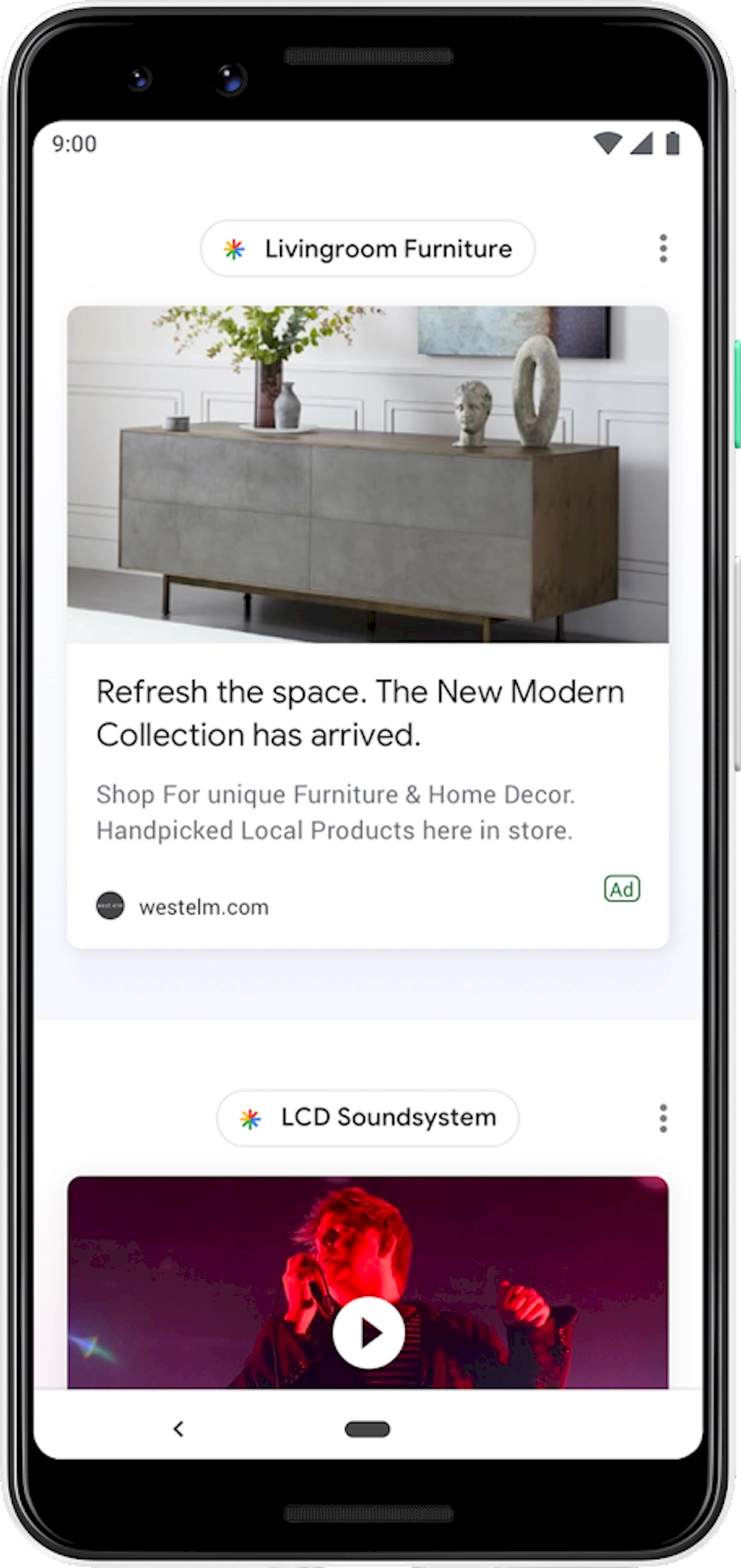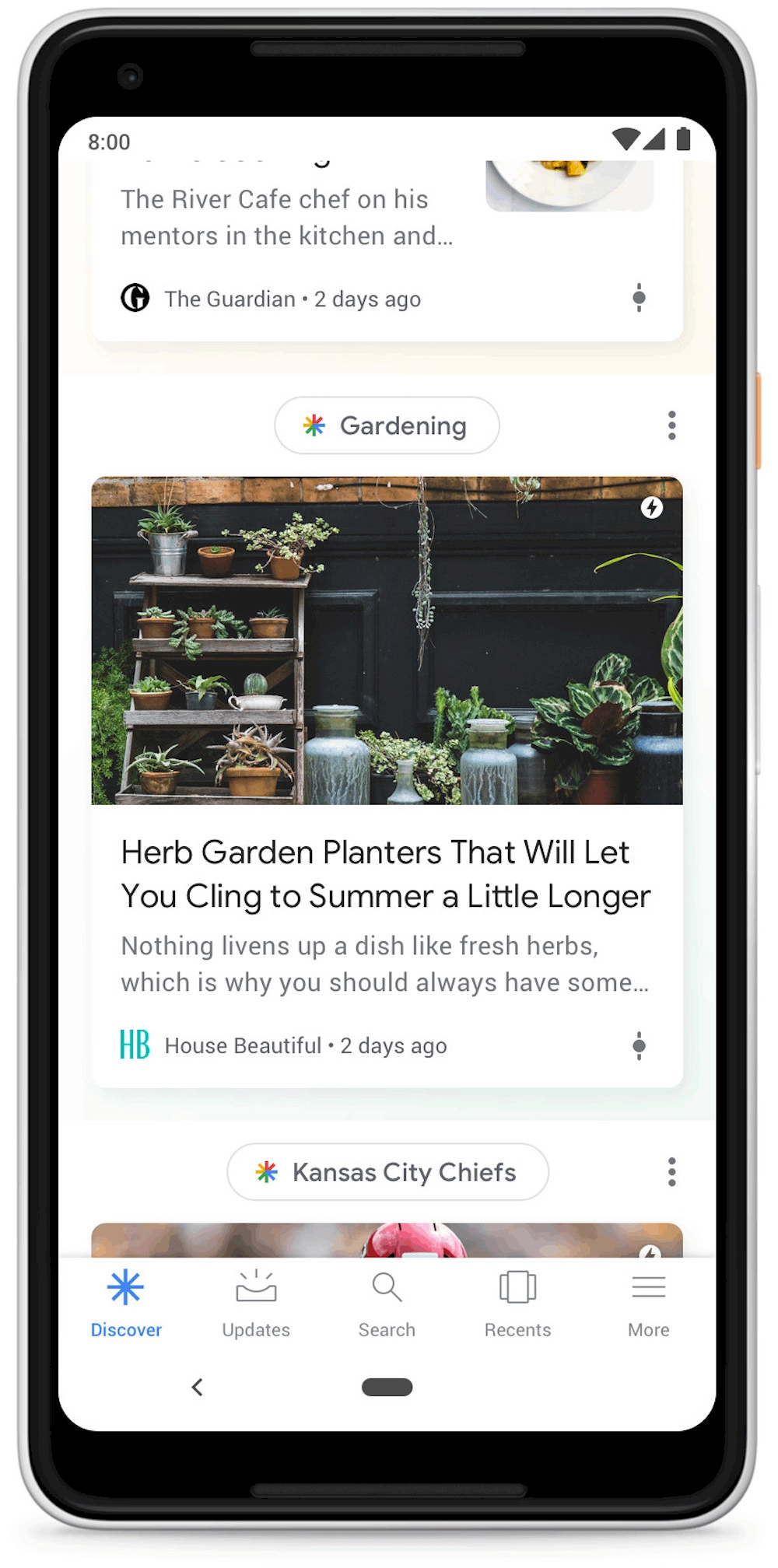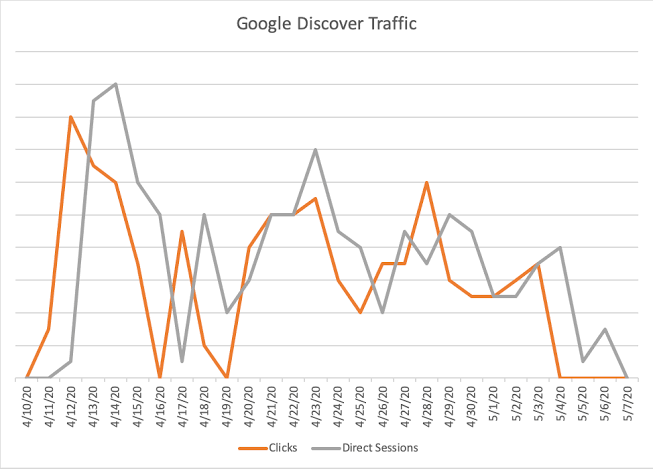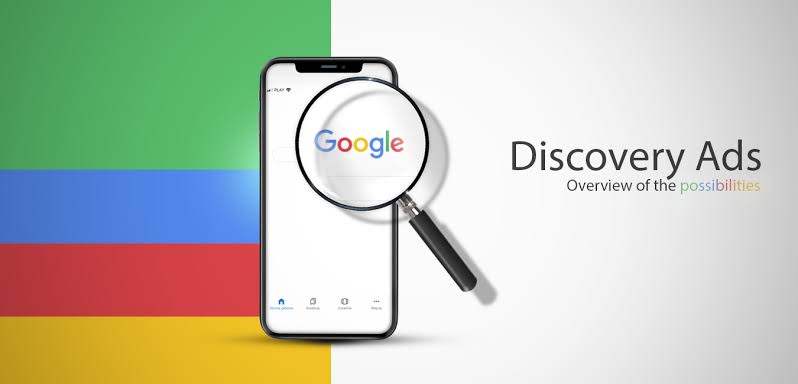Many of you probably haven’t even heard of Google Discover, so let it optimize your content for it!
However, this is a subject that cannot be found strange and should definitely be addressed.
Google Discover, formerly known as Google Feed, is a personalized content tunnel created by Google that proactively delivers relevant content to users.
While the traditional search method requires users to enter a query, Google Discover predicts user behavior to reveal new and interesting content.
As a Google app, Discover is available to Android devices and mobile users at Google.com in all mobile browsers (when signed in to a Google Account).
- What is Google Discover?
- Why Is Google Discover So Important?
- How to optimize content for Google Discover?
- Implementing AMP
- Apply Metadata to Your Content
- How Ads Appear on Google Discover
- Frequently Asked Questions (FAQ)
- Conclusion
Along with delivering the latest news, Google Discover aims to make it easier than ever to discover your interests.
In essence, it is part of a larger initiative to shift the focus of search from snapshots to understanding more complex user journeys.
With endless access to information, Google tries to filter and highlight content for the drifting Internet user.
So, have you ever wondered what optimizations you need to make to make your content stand out in this area?
If we’re ready, we’ll start.
As online publishers since 2018, we know very well that there are sudden noticeable mobile traffic spikes on websites.
While you might think these increases are due solely to a growing pool of mobile internet users, SEO and content strategists have identified an additional culprit: Google Discover.
However, despite Google Discover’s effectiveness in driving mobile traffic, many marketers still don’t know what it is or how it can be used in the online marketing world.
Launched in September 2018, Google Discover is a feature that recommends content to users based on previous Google searches.
This feature highlights a mix of news and timeless content, while emphasizing images such as videos and photography.
What is Google Discover?

Exactly what we will talk about in this guide:
As online publishers since 2018, we know very well that there are sudden noticeable mobile traffic spikes on websites.
While you might think these increases are due solely to a growing pool of mobile internet users, SEO and content strategists have identified an additional culprit: Google Discover.
However, despite Google Discover’s effectiveness in driving mobile traffic, many marketers still don’t know what it is or how it can be used in the online marketing world.
Launched in September 2018, Google Discover is a feature that recommends content to users based on previous Google searches.
This feature highlights a mix of news and timeless content, while emphasizing images such as videos and photography.
In fact, it is a personalized content recommendation engine based on search history and online behavior, powered by artificial intelligence for smartphones and tablets.
The Discover feed lets you see fresh and timeless content on topics you care about.
Google may even estimate the level of expertise on each topic to ensure that the content presented to you is useful.
The feed feature of the Google application, which also offers users suggestions based on past searches, has reached 800 million monthly active users.
The tech giant then decided to revamp it and rebrand it as Google Discover.
The Google Discover launch was part of a larger initiative for the company that aims to identify ways to improve its overall platform and online search experiences over the long term.
During the initiative, Google’s overall platform launched a series of updates associated with major shifts in the way the company thinks about user experiences.
These updates have impacted search, the Google app, and its recommendation feed.
Prior to the Google Discover rebrand, the Google app’s original feed had a more text-based layout that primarily presented users with titles, meta descriptions, and occasional photos.
The design was quite similar to Google’s desktop search result page format.
But it included content recommendations instead of results.
Want to see what the homepage looked like before?

When the feed is rebranded as Google Discover; redesigned to be more visual, more customizable and more user-friendly.
Google Discover also has a wider coverage of online content than the Google feed.
Rather than recommending mostly news and recent content, Google Discover’s; He says he shoots a mix of photos, videos, recipes, news like how-tos, and timeless content.
The image that welcomes us now is as follows:
Discover’s platform allows users to customize their experience, as well as enhance the diversity of online visuals and content topics.
Each content recommendation shown has a specific title topic associated with it.
For example, if you search for a lot of technology topics with Google Search, you may see titles such as “artificial intelligence” or “autonomous cars” associated with Google Discover recommendations.
When users are interested in the content, they can view the content, see similar content by tapping the title, or “follow” the topic.
This will ensure that similar posts appear in future Discover feeds.
In fact, you can compare it to a social media algorithm.
Or if you’re looking for a better example, Pinterest is the closest in our opinion.
If users no longer want to follow a topic, they can tap the “More” button in the Google apps, then tap “Your Data in Search” to see the topics the search results generate.
From here, they can follow or unfollow the topics that Google algorithms have identified in their search query history.
⭐Why is Google Discover so important to SEO?
This predictive aspect of Google Discover is one of its key features and provides a glimpse into the future of SEO when AI assistants are one step ahead of the user to give them what they want before searching.
The user has a high level of control over what they see in the Google Discover area.
They can follow specific topics and let Google know that they want to see more or less of a specific topic.
An important aspect of the content that Discover displays is that its focus is not on fresh and new content, but on content that is particularly new to you, even though it was released a year ago.
The trigger could be a new interest that Google detects through your search and online behavior.
Certain actions, such as booking a trip, can also trigger content discovery around your destination, for example.
The only aspect over which Google Discover has no control over users is news coverage.
Google Discover uses the same approach as full coverage in Google News; which is to show the same stories to each user from a different resource pool.
The goal is to avoid filter bubbles on important public issues.
We can’t help but add that Google Discover is seen as another feature that will not be used when it replaces Google Feed in 2018.
Even then, Discover had 800 million users.
Google Feed was also a content recommendation engine launched in 2016.
Google Feed used machine learning and artificial intelligence to decide what content you should see.
The feed’s redesign and rebranding as Discover highlights the shift from search to prediction in the new product.
It has become an area that will have a huge impact on SEO as we optimize not only for search but also for discovery.
This has increased the importance of Google Discover day by day.
Why Is Google Discover So Important?
Think you don’t need to worry about a feature that only belongs to Google’s app?
So think again.
Websites are already seeing the mobile benefits of Discover.

Want to know who was one of the first brands to take advantage of Google Discover?
My answer is; vogue _
Moreover, in November 2019 alone, Google pulled much more from Google Discover.
Condé Nast , who owns Vogue and a number of other major publications, reports that Discover is now responsible for 20% of Google-based traffic for US sites.
In addition to all the positive data, Google Discover; It is symbolic of where the internet, search engines, and most other online platforms are going.
Interaction with online content becomes more visual, personalized and mobile-optimized.
Now and in the future, the best way to stand out or stand out against a huge pool of similar websites is to post blog pieces, articles, videos, images or graphics that embrace the online trends that Google Discover is already algorithmically promoting.
But all in all, we have to say this.
While Google Discover looks pretty useful, the feature is still relatively new.
It’s app-based only and doesn’t replace Google search.
While we don’t recommend giving up all of your Google search strategies to focus on discovery, a few tactics that increase your chances of landing on Discover will also optimize your site for SEO.

Why is Google Discover a step into the future of search?
Content recommendation engines are used by all kinds of online media companies and services, from Instagram to Netflix to Youtube , to engage users and increase the time spent on their services (and their exposure to ads).
Netflix revealed that 80% of the programs watched between 2015-2017 came from the recommendation system, unlike the show seekers.
Unlike YouTube searchers, 70% of the time users spend on YouTube comes from recommendation systems.
Stop and think…
Which of us didn’t go to ridiculous places after a video we watched?
You see the model, right?

In the past, online media and services were passive providers.
They showed us what they had and only responded when we wanted more: we searched, we explored, we explored.
Online media and services are now taking a more proactive approach to delivering content to keep us engaged.
Google Discover represents another step in this trend that could change the way we optimize my content.
SEO today is clearly built around the action of search.
It answers the questions of what are people searching for, what is their purpose, and how can I answer it in a way Google deems relevant.
What if, in a few years, 70% of the content consumed on Google is discovered rather than searched?
Ben Gomes, Senior Vice President of Search, News and Assistant at Google, shared three changes Google has made to its approach to search:
#one. Moving from answers to journeys. The answer is the final point.
There is no continuity.
Switching to trips means Google will try to predict what the next question will be.
Where are you on your learning journey and what will you need to know next?
So instead of just giving you an answer, Google will approach this as a step in your ongoing information needs.

#2nd. Transition to providing a no-query way to extract information from queries.
Google Discover is the key element of this change.
It’s a recommendation engine that doesn’t rely on search queries, but proactively shows you content based on your behavior.
#3 Moving from text to a visual way of finding information.
It’s not just about revealing more visual content like images and videos in a SERP.
Google also uses AMP Stories, an open-source library that allows anyone to create and post content in the same format, popularized by Snapchat and Instagram.
Thus, it takes concrete steps to facilitate the creation of more visual content.
In addition, Google is developing new tools such as Google Lens, which allows users to use image segments as search queries.
For example, you see a picture of a street in Google Images on your smartphone and you select a car from the street to identify the car.
Or you can search for a pair of shoes and go to sites where you can buy the same or similar shoes.
Let’s put aside the fact that as consumers we are again becoming more passive in our consumption of media and information, and the ethical implications of a few companies not just being impartial watchdogs but actively choosing what content we should see.
The truth is, content discovery rather than search is becoming more important to Google day by day.
This does not mean that SEO is dead; rather, it means that it has to adapt to a new reality.
How to optimize content for Google Discover?
So, do we understand why Google Discover has become such an important place?
Then we get to the tricky part of the job.
How will we optimize content for Google Discover?

Focus on Quality and User Benefit
The content contained within Google Discover is selected by Google’s artificial intelligence to meet a user-perceived information need or interest.
Google will then ensure that only the highest quality content is featured on Discover.
As a publisher, you need to make sure your brand is equivalent to reputable, high-quality and engaging content.
Content should be relevant to your audience, whether it’s a local community or organized around a specific topic.
The aim should be to respond to the informational intent of the target audience in a specific context.
That way, your content is more likely to be picked up by Google’s recommendation engine.
Titles and meta descriptions should be written with the user in mind, address their main informational purpose, and avoid clickbait.
According to Google, “there is no way to improve the ranking of your pages other than by posting content that you think will be of interest to users”.
Google says that above all other tactics, creators should focus on what they do best: creating content that people will enjoy.
A Google Support post ranks algorithmically according to what Google thinks a user will find most interesting.
Content ranking is supported by the strength of the match between the content of an article and the interests of the user.”
he recommends.

SEO Strategist Braden Becker also says that one of the most important things you can do to reach Google Discover is to create lots of quality pieces of content on inclusive topics.
“The most important thing content creators need to remember about Google Discover is that it depends heavily on a user’s past search behavior.
This means that it has the potential to reveal many content that is similar in subject matter to content that the user has already consumed. “
if Becker
“Creating multiple types of content on a related topic and linking between these pages is a great way to tell Google that all of that content is linked. That way, when a user clicks on page A in the regular organic results, they’re more likely to find page B in the Discover feed.”
he recommends.
In addition to increasing the chances of getting into Google Discover with these recommendations, internal linking will also be beneficial for your SEO.

That doesn’t mean you have to put all your content on social media, but you need to be strategic about what content you promote.
Content engagement from search and other channels, such as email newsletters, is also used by Google to determine brand credibility.
It’s not just the traffic your content receives, it’s also how the target audience interacts with it.
How much time they spend on your site, how many articles they visit and how often they visit your site are among the parameters taken into consideration.
Use More Images
As we can see, one of the changes Google has made in its approach to search is to give more weight to visual content.
Creating compelling images and video content will give you and your website more chances to be discovered by Google Discover.
Besides creating quality content and linking them together, Google says the next best thing you can do is add and optimize high-quality photos to your content or website.
Alongside videos, Discover makes the content more compelling by showing large photos with text descriptions.
Even with text-based posts, you’ll want to include visually informative photos that can grab a user’s attention.
Be sure to include alt text and compress files to optimize them for both the Discover and Search algorithms.
So they don’t slow down page load speeds or hurt your search rankings.
So you better make a note to consider the Lazy Load method.
In addition, images must be high quality, with a width of at least 1200 pixels.
According to Google, Discover-related articles with high-quality images tend to have +5% CTR and +3% time spent on site compared to articles with thumbnails.
To ensure high-quality images are used by Google Discover, you need to implement AMP or fill out this form.

Don’t Forget Video Content
Google Discover is highly visual and aims to help people get lost in recommendations for content that is interesting to them.
Since online video viewing grows with each new generation, it is not surprising that Google Discover and Google search algorithms favor this type of content.
As Google Discover highlights video as well as a mix of timeless and new content; You should try different types of video postings, such as tutorials, demos, interviews with opinion leaders.
You can even try short videos that inform viewers about a new trend in your industry.
Whatever you do, embracing video can’t hurt Google Discover or your overall brand marketing strategy.
After all, more and more people prefer to learn about brands through videos.
If you’re worried you don’t have the time or resources to create a video strategy, fear not!
Today, we know that you can create incredible content even with the phone in your hand.
We don’t need to remind you of the video editing programs you can use on your phone or computer .
Implementing AMP

Google Discover is only available on smartphones and tablets.
This means that providing a great user experience on the smartphone is of paramount importance to be featured on Discover.
Implementing accelerated Mobile Pages (AMP) on your site will significantly increase the loading speed of your content.
This will benefit user experience and engagement as you avoid the frustration of long load times.
Not only that.
The AMP format also provides a cleaner user experience by focusing on the core functionality that readers need.
Create a New and Always Updated Content Queue
While Google Feed mostly comes face to face with trending content, Discover takes a user-first approach.
So we know that Google Discover will show audiences a mix of new and timeless content.
Provides users with the ability to capture important or time-sensitive trends; It offers versatile experiences where they can gain value or fun from tips, videos, photos.

Google wants to provide the user with the content they want or need on their knowledge journey. This means the latest industry news or a long-form piece about a particular topic, even though it was published a year ago.
Your content strategy should reflect this approach and include both current events and evergreen content.
Follow the Google News Guideline
Google says that for Google Discover to be on its cards, its content must follow Google News content guidelines.
Google News requirements; It includes publishing original content, keeping advertisements around the content to a minimum, and writing it transparently so that the reader can easily understand who wrote the piece, release dates, where outside sources were used, and other important factors related to credibility.
That doesn’t mean your content has to be on Google News or Discover.
It also doesn’t necessarily mean that your content will be on Google News otherwise.
The only implication is that content featured on Discover may also be included in Google News.

Optimize Your Site and Its Content for Mobile Devices
If you haven’t already, you’ll want to make sure you’re posting content on a site that’s easy to navigate and visually pleasing on mobile devices.
When people find your content on Google Discover, they click it from a mobile device.
If the content is not functional or easy to consume, they can exit your page quickly.
While it’s unclear whether Google Discover algorithms favor mobile-optimized sites, Google search algorithms have been rewarding mobile content since 2015.
A mobile-optimized site will increase your search rankings, thereby increasing your credibility in the eyes of Google.
But even if that’s the case, optimization will make your site smoother and more appealing to those entering through Google Discover.
Apply Metadata to Your Content

Google Discover uses machine learning to organize content and decide what content to recommend to users.
Applying metadata to your content helps Google’s Artificial Intelligence understand what your content is about and the knowledge gap it contains.
Research Your Competitors
You can do some basic research to see what kind of content Google Discover is pulling out of its competition.
The first thing to do in between these searches is to make sure you follow the topics you target on Google Discover.
This alone will give you a lot of insight into how Google Discover organizes the information it presents (based on audience patterns and behavior).
There are articles on these topics that you can analyze to understand why they were chosen by Discover.
Another research angle is social media.
Content shared from Discover to Twitter or Facebook includes the words “From Discover on Google” by default.
So if you do a Twitter search for the topic “From Discover on Google”, you can identify content suggested by Google Discover.

How Ads Appear on Google Discover
Google started monetizing Discover in May 2019 with the introduction of Discovery Ads .
This type of ad format; It consists of a loop of images that can be shown in the YouTube main feed, intros in Gmail, and in social tabs outside of Google Discover.
Google is also bringing Showcase Shopping ads to Google Discover, a similar rich media format.
This time, however, window advertisements focused on displaying products from an online store.
Both forms are interactive and intriguing; By displaying visually rich and interactive ads, it tries to benefit from user content discovery and inspiration.
How to Analyze Google Discover’s Impact on Organic Traffic
Google has added a ‘Explore’ section. You can see what content is received by ‘Google Discover’ and how it performs.
You can see impressions, clicks, CTR, a click timeline, and countries where traffic is coming from.
This section is only available to publishers who already have content on Google Discover.

But what if you want to analyze traffic data from Google Analytics or any other web analytics package?
As of now, there is unfortunately no obvious way to attribute traffic from Google Analytics to Google Discover.
Even if we don’t get the full picture now, that doesn’t mean that publishers can’t use the available data to analyze and optimize their content.
Publishers can start by grouping their content in Explore by topic and, if possible, in a subheading.
You will begin to gain some basic understanding of the type of content received by Discover and how effective it is.
From this baseline you can start experimenting with different header styles, different image types and see what helps you increase visibility and engagement.
Orientationfiltre ile | |
|---|---|
| iOS Google App (Discover) | No redirect(direkt) |
| iOS Google App (Search) | https://www.google.com/search?q=….www.google.com/ |
| iOS Google News App | https://news.google.com/news.google.com/ |
| iOS Google Chrome (Article For You) | https://www.googleapis.com/auth/chrome-content-suggestionswww.googleapis.com/ |
| iOS Google Chrome (Search) | https://www.google.com/www.google.com/ |
| Android 9 Google App (Discover) | android-app://com.google.android.googlequicksearchbox/https/www.google.comcom.google.android.googlequicksearchbox/ |
| Android Google App (Discover) | https://www.google.com (no trailing slash)www.google.com |
| Android 9 Google App (Search) | android-app://com.google.android.googlequicksearchbox (no trailing slash)com.google.android.googlequicksearchbox |
| Android 9 Search Bar | android-app://com.google.android.googlequicksearchbox (no trailing slash)com.google.android.googlequicksearchbox |
| Android Search Bar | https://www.google.com (no trailing slash)www.google.com |
| Android Google Chrome (Search) | https://www.google.com/www.google.com/ |
| Android Google Chrome (Article for You) | https://www.googleapis.com/auth/chrome-content-suggestionswww.googleapis.com/ |
| Android Google News Widget | https://news.google.com/news.google.com/ |
Another analysis vector is to compare the performance of your content on Discover with the average performance of your articles in Google search.
The most useful metric for comparison, in this case, is clickthrough rate.

Frequently Asked Questions (FAQ)
What is Google Discover?
Google Discover is the new name for Google Feed.
Topics and news around Shows items get you the content that interests you more quickly.
With Google Discover, you can find out about your interests like your favorite sports team or news site without searching.
Where is Google Discover?
Google Discover (formerly known as Google Feed) delivers relevant content to proactive users to Google generated by a personalized content feed.
Discover is available to mobile users on all mobile browsers (when signed in to a Google Account), the Google app, Android devices, and Google.com.
Why is Google Discover important?
Google has publicly announced that Google Discover will show audiences a mix of new and timeless content.
This means giving users versatile experiences where they can capture important or time-sensitive trends and derive value or entertainment from more ongoing tips, videos or photos.
Why can’t I access Google Discover?
If you cannot access Google Discover from your mobile device, the first step is to check if it is turned on.
If it is not open, you will see a blank page when you open Google.
To fix the problem, you can try to delete the cookies, update your app, or check if Google Discover is turned on from the Google app.
What is the difference between Google Discover and Google News?
Google Discover is not a quick way to get into Google News.
The only prerequisite for entering Google Discover is that its pages are indexed by Google and meet all Google News requirements.
While this may seem like a way to get into Google News, it isn’t.
It’s best to think of Google Discover as a step towards getting closer to Google News, but the two are not interchangeable.
Conclusion
Google Discover represents a major shift in the way Google approaches its mission of organizing information and providing users with the best and most useful content.
Google now proactively recommends content rather than answering search queries as best as possible.
This shift is in response to a change in user habits we’re used to with recommendation engines, to the point where these AI-powered discovery mechanisms are responsible for a very large portion of my media consumption.
It makes sense for Google to introduce content discovery as a tool to keep us engaged with their ecosystem.
For publishers, it represents an opportunity for your content to be available to a new audience.
While publishers currently have limited tools to measure the effectiveness of Discover as a recommendation engine, it makes sense to stay on top of a trend that could change the way search optimization forever.
To provide quality content,Google Discover and Google Search are trying to do something similar.
Therefore, you should always focus on creating a solid and informative experience for your audience.
Strong editorial judgment can help you create engaging content, while SEO strategies can help you gain credibility in the eyes of Google algorithms.
Both of these strategies can increase your search rankings while also increasing your chances of reaching Google Discover.
If you have implemented basic SEO strategies on your blog or website, you will realize that optimizing your website for Google Discover and SERPs is like killing two birds with one stone.
Even if you don’t land on Discover feeds right away, this approach will help you embrace a new type of online content and traditional SEO strategies at the same time.
You can become a member of our site to grow your Instagram accounts and increase your followers, likes, views and subscribers. Click to see our social media products.

